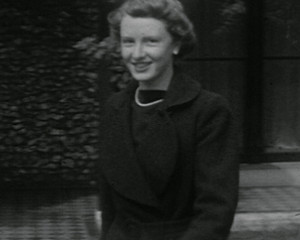
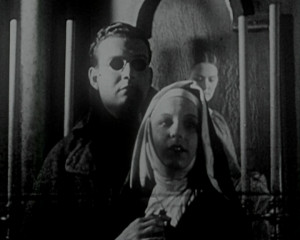
‘Drama. A nun is seduced by a lothario. Her steadfast admirer is slain trying to protect her. Her redemption is ensured by a religious painting coming to life, the Madonna taking her baby’ (EAFA Database).
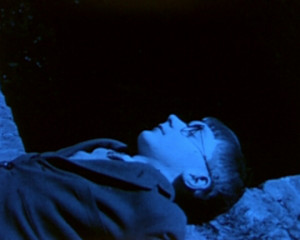
"Amateur filmmaker and cinema historian H.A.V. Bulleid makes ample use of trick photography in this farcical science fiction comedy about a boy and his latest invention. After being knocked unconscious by his brother on a moonlit night, a boy sits in a barn surrounded by Heath Robinson-esque gadgets and working on his latest invention, a 'Molecular Condensation Apparatus' that will vapourise anything set before it. Testing the device on the family cook, who disappears before their very eyes, he continues to experiment on bushes, garden implements, a carload of cousins, a young lady named Kitty and even his own father, before broadening his scope to cinemas, milk bars and his whole family. But did they really disappear? And did it actually happen? Or was it all just a dream?" (EAFA Database).
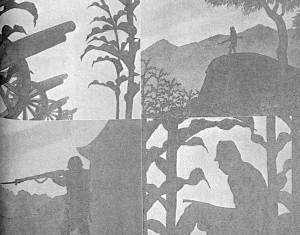
"Silhouette animation that narrated a story about a son at the war, who sends a letter to his father waiting for him in his homeland. The narrative unfolds as the father reads through the letter that reveals the son’s life and circumstances in the war zone. Contemporary reviews indicate that the film included scenes such as a group of soldiers trying to walk through heavy snow, as well as the soldiers attacking into the enemy’s territory. Praised as a jikyoku eiga (film of the times) that not only “touched the audience’s heart” but also provided a new direction for amateur filmmaking under the wartime emergency." - Noriko Morisue, "Filming the Everyday: History, Theory, and Aesthetics of Amateur Cinema in Interwar and Wartime Japan" (Yale University: PhD Dissertation, 2020): 213.
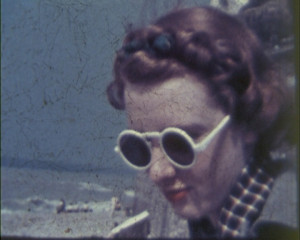
"Amateur filmmaker, cinema historian and railway engineer H.A.V. Bulleid employs his flair for amateur production to spice up his home movies of a romantic trip to France. Acting in a moment of impulse, a man proposes to take his female friend to Paris. Leaving behind Dover's white cliffs, they arrive in Calais 'in less time than it takes to read the Bible'. Once their car - named 'Tilly' - has been unloaded, they set out to Paris via Le Tréport, Belleville, Rouen and Louviers. Arriving in the French capital they head straight to 'the film director's joy', the Avenue des Champs-Élysées and L'Arc de Triomphe, visit the Paris Bourse and tour the city's streets and boulevards. Pausing for a drink, they continue on to Place Saint-Augustin and Montmartre, dining at Moulin de la Galette - 'a tourist's paradise...pay double and eat half' - before catching a film at Studio 28. Tearing themselves away from the city of light with one last drink at Cafe George V, they drive through a gathering storm to Étaples and on to Le Touquet-Paris-Plage, 'haunt of motion picture stars', before a flurry of editing retraces their trip, marked out on a map" (EAFA Database).
scientific film
Total Pages: 299